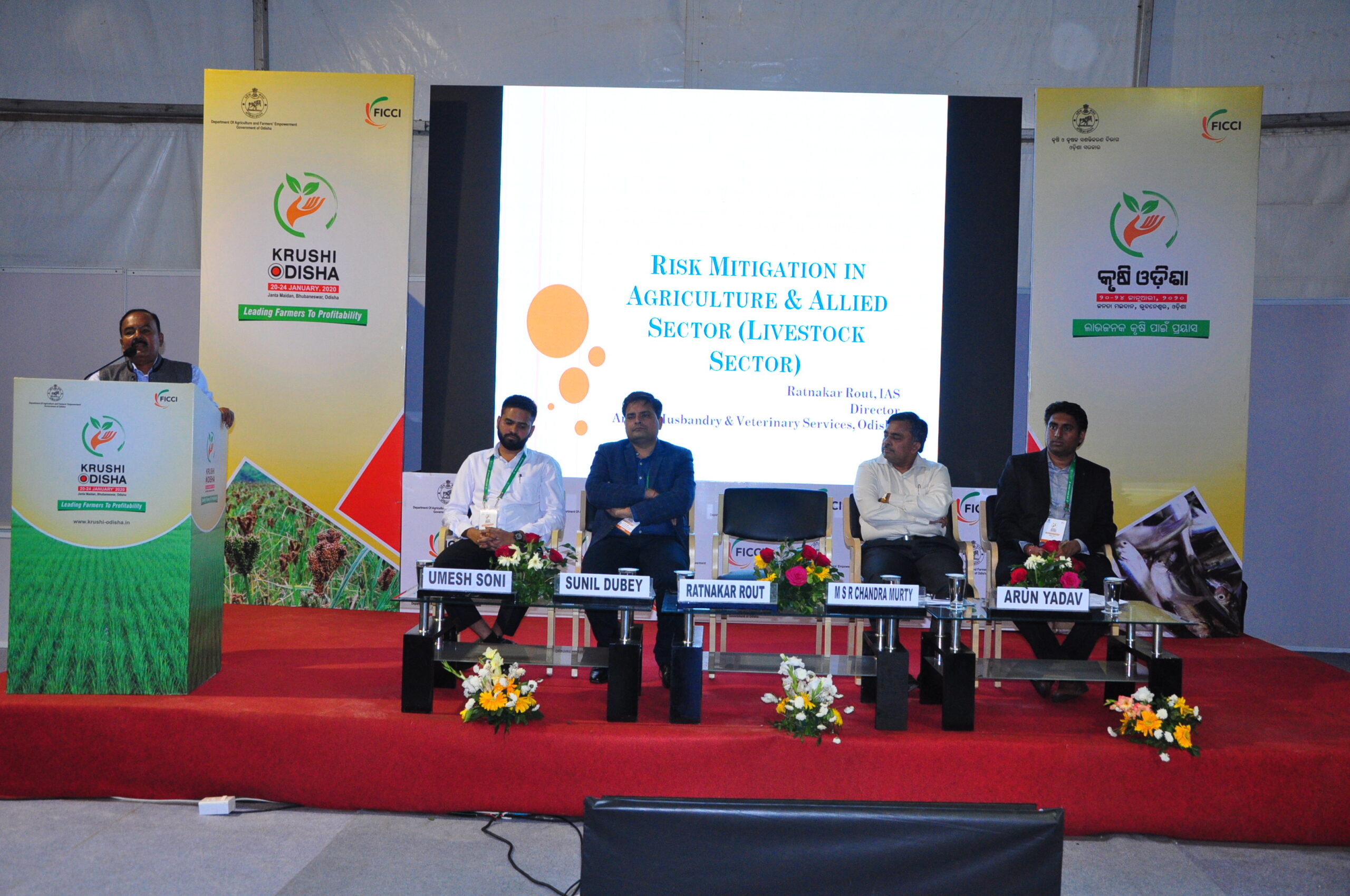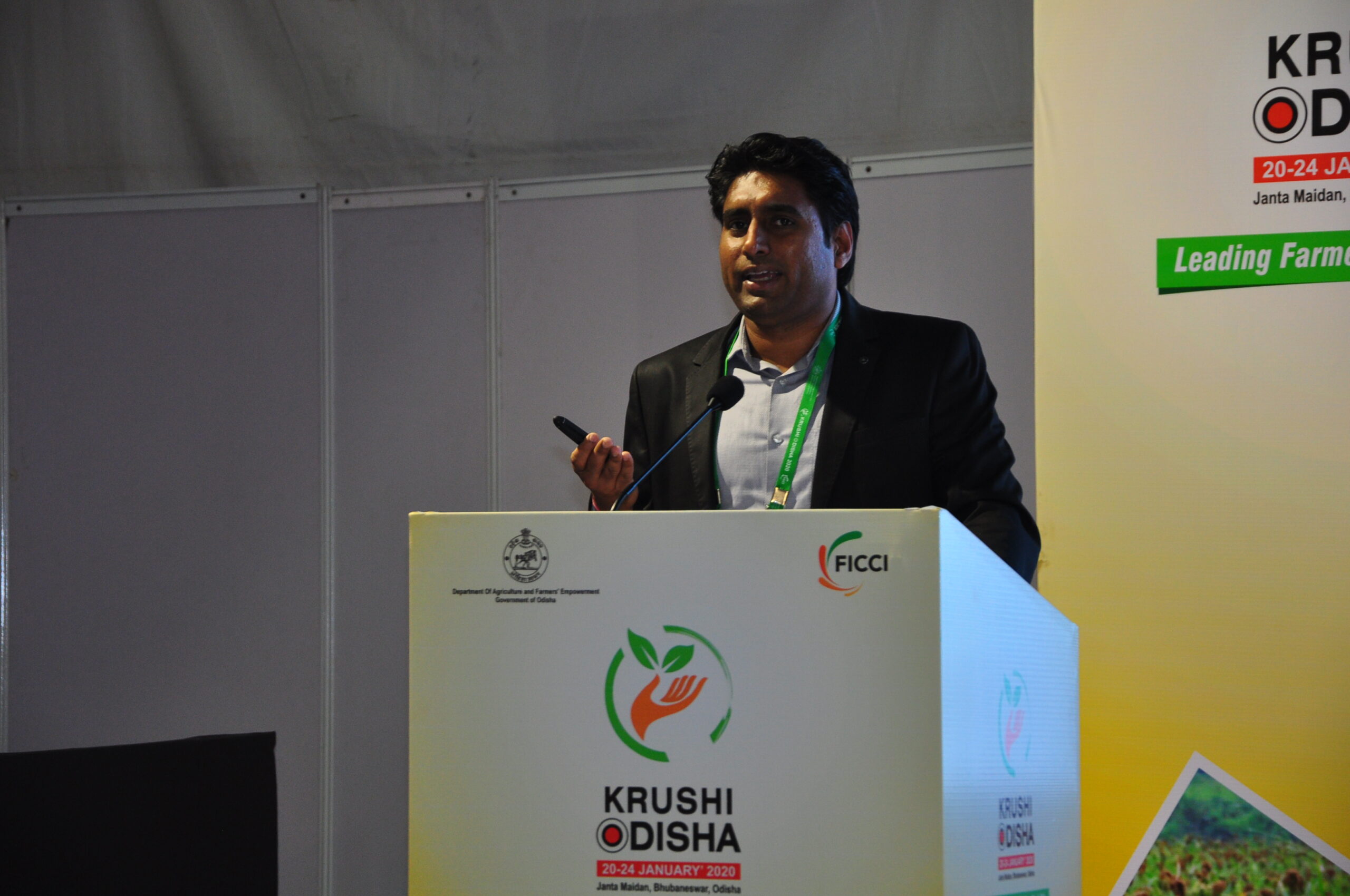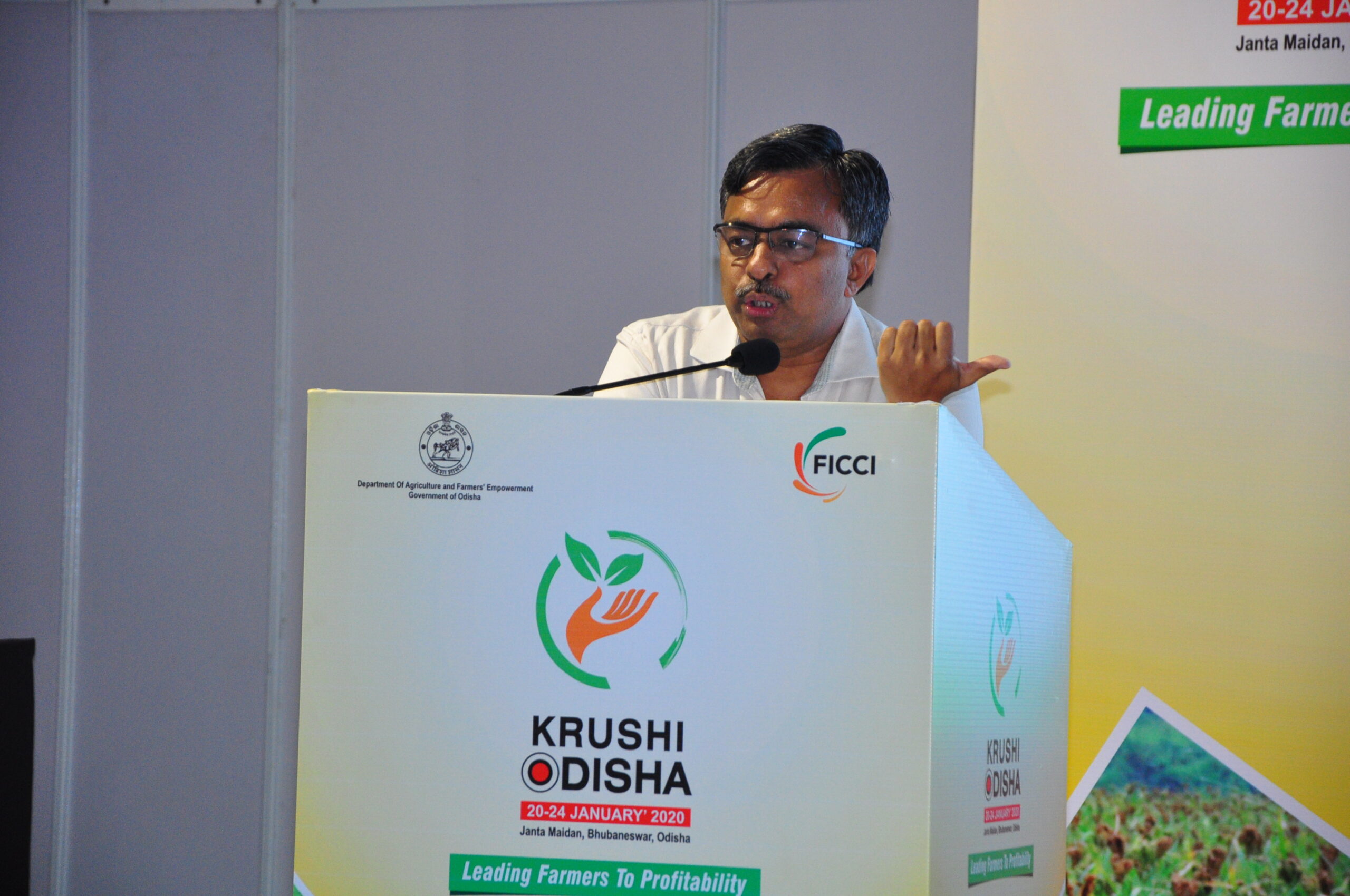OdishaPlus Bureau

Sri Ratnakar Rout, Director, Animal Husbandry and Veterinary Services, Odisha mentioned in his opening remarks at almost 80 percent of the farmers in Odisha are small land holders. More than 26 lakh small and marginal farmers don’t have any land thus being called landless agricultural farmers. He went on to say that farmers with more than 5 acres of land are referred as big farmers. The big farmers also have cows, poultry, pigs, goats or ducks as livestock. Sri Rout was speaking in capacity as the Chief Guest of the seminar on ‘Risk Management in Agriculture and Allied Sectors with Special Focus on Financial Institutions and Insurance’. The seminar was part of the knowledge sharing activities under the Krushi Odisha agri fair.
The speakers on the topic included Sri Ratnakar Rout, Director, Animal Husbandry and Veterinary Services, Odisha, Mr. Sunil Dubey, Mahalanobis National Crop Forecast Centre (MNCFC), Govt. of India, Mr. Arun Yadav, NCDEX, Mr. MSR Chandra Murty, NABARD Bhubaneswar and Mr. Umesh Soni, Asst. Vice President, HDFC ERGO General Insurance Company.
“We provide 36 Lakh MT of rice as surplus to the national stock. This is a huge achievement for the farmers and the state of Odisha considering we were a rice deficient state a few years ago. Now the situation has improved and the farmers’ hard work has gained us the status of a rice surplus state,” opined the Director of Animal Husbandry and Veterinary Services of the state.
“Our aim is to double the farmers’ income. The unemployed youth should strive to become entrepreneurs and generate employment for others by venturing into Agriculture and Allied Sectors. We should try to increase Production and earn more profits to strengthen our finances and help boost the economy.” Sri Rout said further.

Livestock resources are susceptible to risk. Natural disasters, uncertainties in yields and prices, weak rural infrastructure, imperfect markets affect the livestock population and their rearing stances. Bacterial and Viral infection too affects livestock. Non adoption of sex sorted semen technology, orthodox beliefs lead to a poor condition of livestock in the state. Timely vaccines and immunization help mitigate disease risks in livestock. Livestock insurance began in the early 1970s. The Govt. is striving to penetrate insurance schemes to the rural areas under National Livestock Mission.
The Calamity Relief Fund and National Calamity Contingency Fund have been created for mitigating the risks and financial loss to farmers. In case of calamity, the farmers need to relocate livestock to safer areas, keep their feed dry in order to protect them from danger. The official also advised the farmers to use modern technology and awareness and save animals from diseases. “Farmers can open cooperative society or market their livestock products from OPOLFED”, concluded Sri Ratnakar Rout.

Mr. Arun Yadav informed that NCDEX is an online trading platform dealing in futures. The help farmers predict financial risk in pre production stage where decision is based on prices of previous season. They also provide post production solutions in the form of actual price realization. “We choose the biggest representative center in India for setting quality and price benchmarks. Farmers can benefit by price prediction pattern of NCDEX. India spot prices are dictated by NCDEX prediction which can be used further for bargaining in their local market”, said Mr. Yadav.
Mr. Sunil Dubey apprised the audience that MNCFC is a major user of satellite technology in India. “Remote sensing data is available real-time and for free, it is beneficial over ground data. Since satellite data is available in the long term, they provide good assessment of drought, floods and can be used for risk zoning. Crop yield, risk assessment, pest attacks and other things could be predicted and real time data assembled via remote sensing and hence technology can help mitigate risks to crop and enable better insurance management”, advised Mr. Dubey.

Mr. MSR Chandra Murty talked about various factors affecting agriculture in Odisha. He briefly talked about climate variability, natural disasters, uncertainties in price and yield, low level of financial and credit availability being the chief causes of farmer distress throughout the country. He then informed the farmers present in the audience about agriculture debt waiver and debt relief schemes. He also touched upon the PMKISAN n KALIA scheme. Farmers must keep at least one cow and one fruit bearing tree to mitigate risk of depending on a single crop”, said Mr. Murty.

Mr. Umesh Soni talked about various risks involved in agriculture like production risk, market risk, finance risk, and other miscellaneous risks involved. He then outlined the risk mitigation process as risk identification, risk assessment, risk management and risk control. Mr. Soni also also detailed the salient features of PMFBY (Pradhan Mantri Fasal Bima Yojana), one crop one premium scheme of the central government, National Crop Insurance Portal for transparency and Ease of Administration. He further advocated for crop insurance technology for better understanding of risk and management. The seminar was focused on the various risks in agriculture and how to mitigate the same as well as avail better crop insurance and financial support from the government in case of disasters like natural calamities, crop failure, pest infestation and other related causes.
‘Krushi Odisha’, the annual flagship five day exhibition cum agri fest, organized by Dept. of Agriculture and Farmers’ Empowerment, Govt. of Odisha in collaboration with FICCI is being held from 20-24 January 2020 at Janata Maidan, Bhubaneswar. The mega programme which envisages leading farmers to profitability involves various aspects like farm income, implements, modern technology in farming, financial assistance to farmers and capacity building.




















